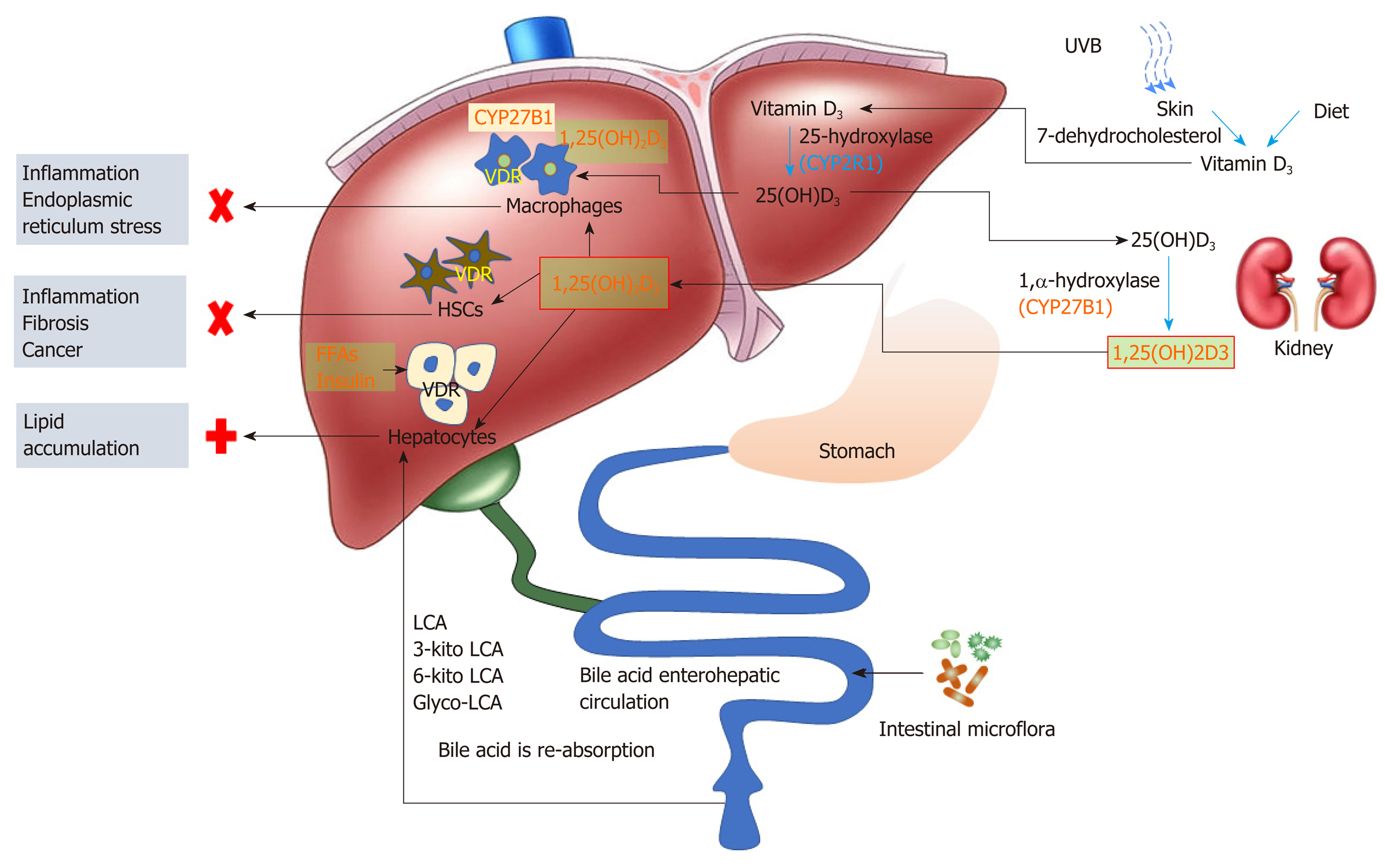Copyright
©The Author(s) 2020.
World J Gastroenterol. Oct 14, 2020; 26(38): 5812-5821
Published online Oct 14, 2020. doi: 10.3748/wjg.v26.i38.5812
Published online Oct 14, 2020. doi: 10.3748/wjg.v26.i38.5812
Figure 1 Expression and function of vitamin D receptor in different liver cells.
Diet and skin producing pre-vitamin D (vitamin D3) is transferred to the liver, and converts into 25(OH)D3. Liver synthesized 25(OH)D3 is transported to the kidney, and converts into biochemically active 1,25(OH)2D3 via the catalase CYP27B1. 1,25(OH)2D3 then enters the circulation to distribute to tissues. Liver macrophages express CYP27B1, and vitamin D receptor (VDR) activation in liver macrophages can be achieved by both circulating and locally synthesized 1,25(OH)2D3; VDR in hepatocytes can be activated by circulating 1,25(OH)2D3 and gut microbiota-metabolized secondary bile acids. VDR activation in liver macrophages and hepatic stellate cells exerts anti-inflammatory and anti-fibrosis effect, respectively; whereas VDR activation in hepatocytes is supposed to contribute to lipid accumulation in the liver. LCA: Lithocholic acid; VDR: Vitamin D receptor; HSC: Hepatic stellate cells; UVB: Ultraviolet radiation B.
- Citation: Cao Y, Shu XB, Yao Z, Ji G, Zhang L. Is vitamin D receptor a druggable target for non-alcoholic steatohepatitis? World J Gastroenterol 2020; 26(38): 5812-5821
- URL: https://www.wjgnet.com/1007-9327/full/v26/i38/5812.htm
- DOI: https://dx.doi.org/10.3748/wjg.v26.i38.5812









